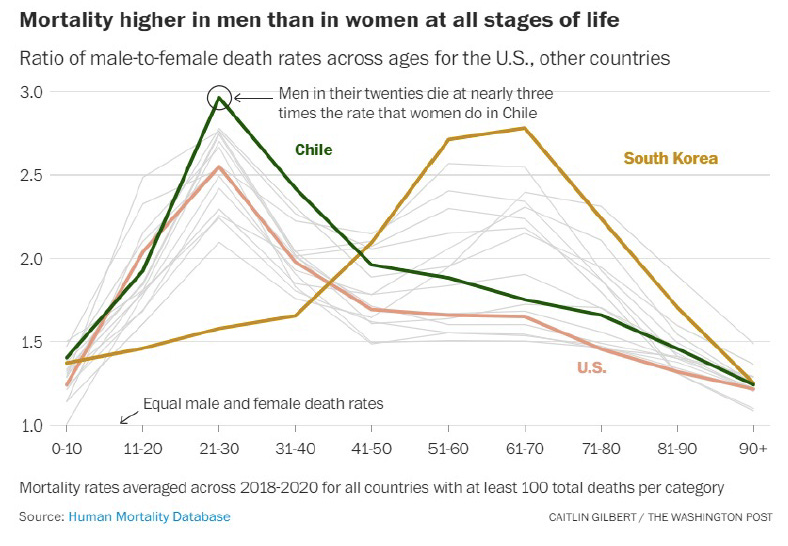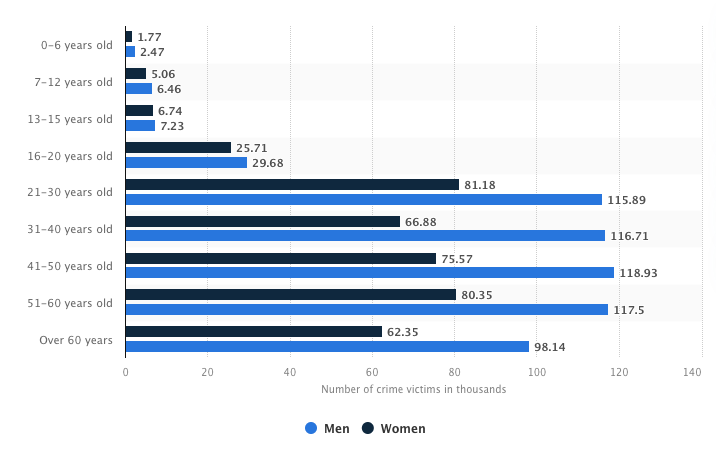Mortality of South Korean Men
If we look at all countries, the death rates in youth start low, near a 1:1 ratio - having one male die per female. The mortality rate for men remains higher throughout most countries, but one indisputable trend is that there is a spike at around 21-30 years old. After this, it decreases for some countries, while other countries decrease and then peak again somewhere in the 51-70 age range. Yet, if we look at South Korea, it is the only country on this map that defies the trend.
There are a few potential reasons for this:
1) South Korean women ages 21-30 die more.
2) South Korean men ages 21-30 die less.
3) A combination of points 1 and 2.
To the best of my knowledge (cursory search on Google Scholar), we haven’t really looked into the reasons for this.
A quick look on Statista reveals that the depression rates for women are actually higher for females as compared to men. The age ranges were slightly different (18-29, 30-39, etc.) yet there is a clear trend in that women have consistently higher depressive rates than men, with the only exception being the 60-69 year age range.
Does the trend in depression correlate with the trends in suicide? Surprisingly, not exactly. The suicide rates for Korean men are higher than those for the women, but not by as high as a margin as they are in other OECD countries. Even then, the margin is quite large. For the 20-29 age range, it is about 24 for men, and about 18 for females. This is a ratio of about 1.33, which is lower than the death rate ratio of over 1.6.
There are also differences in homicide rates and health issues between genders which may also be primary contributors.
Crime rates: I couldn’t find a reliable, accurate source for homicide rates, so I used crime victims as a proxy. The rate for men as compared to women is higher here, as well, contributing a ratio of about 1.43.
The remaining main contributor to the issue appears to be health: upon a quick look, there weren’t any sources (that weren’t heavily blocked by a paywall) that had health-related deaths separated by gender for this age group. As a proxy, there’s an older source that shows that men have a higher death ratio for liver disease, chronic lower respiratory disease, and malignant neoplasm. (Interestingly, higher rates for transport accidents as well).
As a sidenote, one interesting factoid is that socioeconomic status does not seem to be a factor.
There are many articles that emphasize that the suicide rate in South Korea had been going down, but women were driving it back up. This is rather concerning, given that South Korea currently has the highest suicide rate (26 per 100k) in the entire developed world. Identifying the underlying factors seems important.





